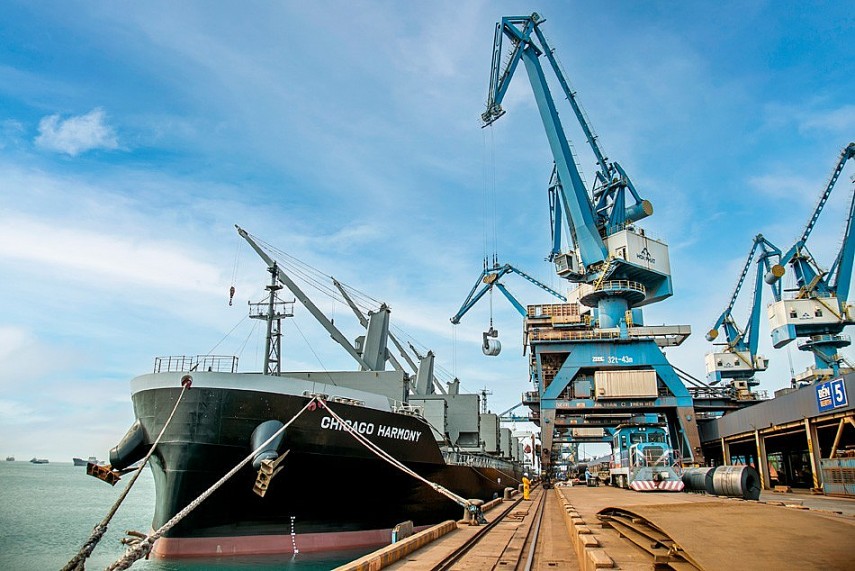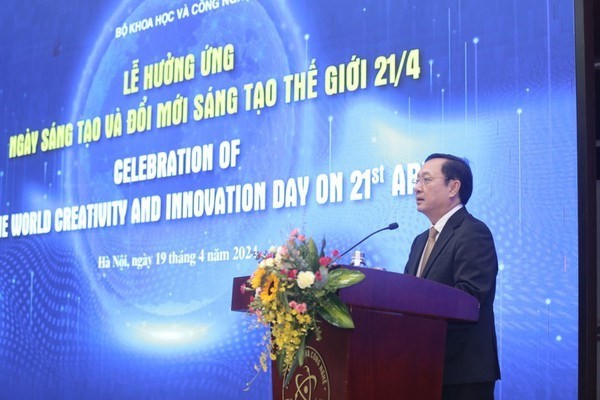Steel exports overcome barriers
The World Trade Organization (WTO) estimated that steel export value may drop by four percent under the impact of the EU Carbon Border Adjustment Mechanism (CBAM). Faced with this challenge, Vietnam's steel industry needs to improve product quality, meet international standards and develop sustainably.
Facing challenges
The General Statistics Office report shows that in the first two months of this year, iron and steel exports reached US$1.5 billion. Although in February alone, iron and steel exports decreased to the lowest level in the past three months, estimated at 950,000 tonnes, worth US$678 million, down 18.1 percent in volume and 17.6 percent in value compared to the previous month. However, exports of these products increased by 19.3 percent in volume and 12.6 percent in value compared to the same period last year.
 |
Export of hot-rolled coil steel at Hoa Phat Dung Quat port – photo: Hoa Phat Steel |
According to Dr. Nguyen Van Hoi - Director of the Institute for Industry and Trade Strategy and Policy Research (Ministry of Industry and Trade - MoIT), since mid-2023, steel exports to the EU market have faced two major barriers: safeguard measures and CBAM.
The first hurdle comes from safeguard measures targeting imported steel which took effect from July 1, 2023. It maintains safeguard measures for steel imported into the EU until June 30, 2024. For Vietnam to be exempt from safeguard duties, it has to maintain the proportion of exports at below three percent of the total EU import turnover for each type of product. If the quota is exceeded, the import tax payable for the excess is 25 percent.
The second hurdle is the CBAM, which aims to levy a carbon tax on all goods imported into EU markets, based on the intensity of greenhouse gas emissions in the host country's production process. Currently, this mechanism is in phase 1 when exporting enterprises, including steel enterprises, must declare emission levels.
Adaptation for sustainable export
Experts believe that the impact of CBAM on Vietnam's steel export in the long term, along with the transition to a green economy, is an opportunity for Vietnamese steel enterprises to improve product quality and meet international standards and develop sustainably.
The Vietnam Steel Association proposed that the government should take measures and provide financial support to encourage steel manufacturers to upgrade production techniques to reduce energy consumption and carbon emissions, and gradually phase out inefficient and outdated production technology.
From the perspective of state management of the steel industry, under the impact of technical barriers and CBAM mechanisms when exporting steel to the EU, Do Nam Binh, head of the Minerals and Metallurgy Division at the Vietnam Industry Agency under the MoIT, recommended that steel manufacturers must continue to comply with regulations under the Law on Environmental Protection, Decree 06/2022/ND-CP, the National Strategy on Climate Change and Vietnam's commitments at COP26. They also need to optimize technology, save energy, promote digital transformation to promote steel export to the EU. At the same time, Vietnam needs to have a set of product quality standards according to regulations on goods quality management to prepare for CBAM implementation.
Duy Anh



 Print the article
Print the article